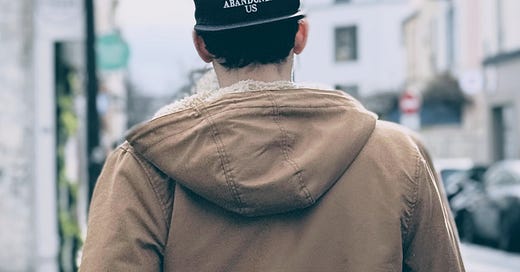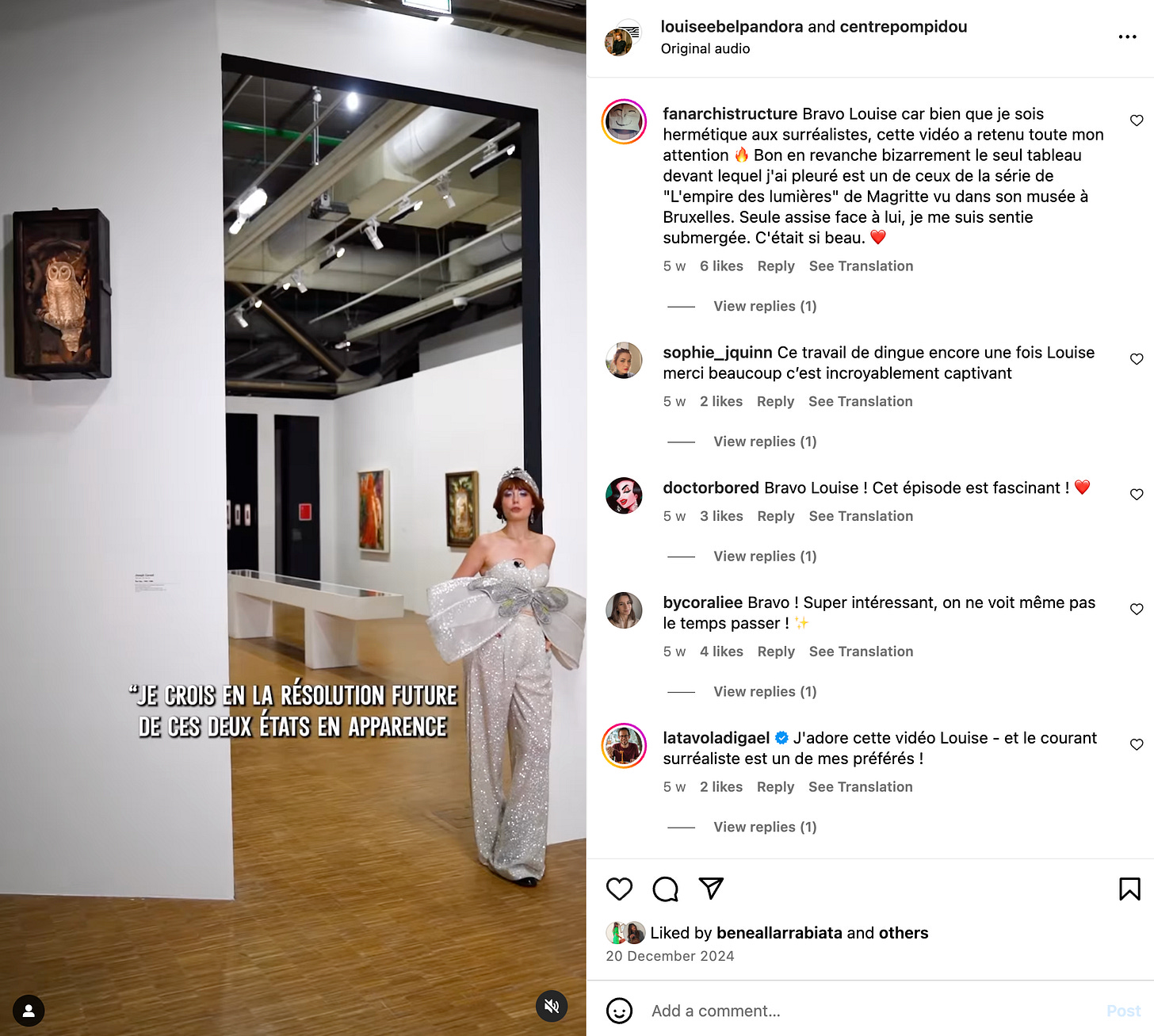The Paracommunity Shift: Why Followers Matter More Than Ever
Influence is not a title one claims but a recognition that is earned. Its true strength lies in the quality of followers—not mere spectators, but the real architects of power. You can't buy followers.
Tuesday Night on Earth. An ode to followers, the very essence of social media. Feel free to share this letter, like it, or write to me (by replying to this email). Every small action is an encouragement.
We often forget that being an influencer is not something one simply declares by adding it to their Instagram or TikTok bio. It’s a form of recognition, a capacity to emerge in the real-life word-of-mouth of people, to exist, and to generate actions among dozens or even millions of people. But this recognition is built on a crucial, often underestimated pillar: the followers themselves. It is their actions, interactions, and conversations that transform a simple creator into a figure of influence.
At a time when social media usage has plateaued, one rarely analyzed factor remains: the quality of a creator’s or brand’s followers, and the depth of the conversation they generate.
Conversation: Proof of Influence, Proof of Belonging
On Instagram, the comments section can reveal countless gems—anecdotes, insights, and enrichments. Personalities who manage to offer more than just an image receive, in return, a wealth of new ideas, additional information, reactions, or even points of disagreement. And this is true regardless of the topic.
Take Louise Ebel, for example. She creates incredibly high-quality videos at the intersection of art, fashion, and culture. But it’s not just the quality of her content that matters—it’s how her followers engage with it. Far from being a one-way broadcast, her audience shares their opinions and references. The comments make you want to revisit the post, turning them into social anchor points, even on a platform increasingly resembling a mini TV channel.
On Substack, this phenomenon is even more fascinating. The Chat feature, tied to an author's posts, can sometimes be even more engaging than the content itself. It transforms the reader into a co-creator. No longer just an "audience," they become an active force enriching the original reflection.
by is phenomenal in this regard; its community shares discoveries, trend-spotting insights, and style-hunting tips. These interactions go beyond personal enrichment. They contribute to a collective dynamic where content becomes a pretext for creating a shared culture. In the long run, this social functionality—almost spontaneously driven by followers—can even justify paying for a subscription.Forums, Subreddits, or Discord servers embody this return to strong community dynamics. In these spaces, governance is horizontal. There isn’t just one influential figure but an entire social architecture: moderators, highly active members (+voice), and a multitude of users who give the forum its value. This horizontality is a response to the growing fatigue with traditional models of influence, which are often perceived as impersonal or inaccessible.
Many brands are now striving to reach this level of discussion. Luxury brands, for instance, see it as a way to increase the perceived value of their creations. But this model extends far beyond that. In sensitive fields like healthcare, forums and community spaces help establish trust and legitimacy far beyond what a simple TikTok post could achieve. While media reach is still sought after, it holds little value without credibility and trust.
True Influence: Making a Community More Attentive to Comments Than to Content – The Paracommunity
Likes, comments, and shares from followers are the real currency of influence.
Without these micro-actions, the creator economy wouldn’t exist. But followers’ power isn’t limited to quick clicks—it extends to their role in viral dynamics and network effects. Each micro-action may seem trivial on its own, yet when accumulated and amplified by platform algorithms, they bring content to life. Followers, particularly those who engage in the first few minutes after a post (the first movers), play a critical role in virality.
Here lies a paradox: while influence appears to rest on well-established public figures, it is the anonymous users who ensure its success. This is the realm of the paracommunity.
We are already familiar with parasocial relationships, where audiences develop psychological connections with artists, performers, or celebrities—whether through fictional narratives (like TV series) or staged interactions (such as talk shows). But what we’re now witnessing is an increasing attachment to the community itself: the relationships formed between members on Discord, the cultural habits emerging in fan forums, and the feeling of being part of something larger than oneself.
These dynamics are not new, but they are accelerating thanks to the latest social media features. Platforms now blend the ultra-intimate (ephemeral content), the ultra-present (Instagram channels and always-open Discord servers), and the ultra-sensory (media fusion, particularly on Chinese platforms where visuals and sound are increasingly interwoven).
And when we look at where money is flowing, the share of simple advertising revenue is decreasing for creators, in favor of partnerships, long-term collaborations, and subscription models. These models require sustained engagement, placing followers at the heart of the system. It is no longer about raw audience numbers but about deep, community-driven relationships.
Followers: The Real Joy
In a world where platforms prioritize large numbers, having millions of followers does not guarantee real influence. It’s a cliché, but superficial interactions, the absence of meaningful conversations, and lack of engagement dilute impact. Meanwhile, niche creators with just a few thousand engaged followers can generate far deeper and more transformative discussions.
This paradox forces creators and brands to rethink their strategies. The goal is no longer to accumulate followers but to build an active, participatory community. This translates into a more direct connection to the community itself. Substack, in particular, is fascinating because it grants creators the sacred power of email—a hyper-personalized channel where the recipient truly receives their most important messages, not just another notification lost in the endless feed of X.
Followers are no longer just spectators or passive consumers. Their collective power is reshaping the rules of influence, shifting it toward spaces where conversations, micro-actions, and community dynamics are the real value drivers. In this new paradigm, the influencer becomes a facilitator—a central figure, but never an isolated one. Perhaps this is where the future of social media lies. And maybe even the future of politics.
The stat of the week: 37%
According to Credoc, 37% of young French people aged 15-30 reported keeping up with the news every day over the past 12 months, compared to 69% of those over 30. Social media is now the primary news source for half of 15-30-year-olds: 53% listed it as their first, second, or third source of information, far ahead of television news. This is an important indicator that challenges the cliché of the self-absorbed youth.
Amazing links
All the data on global mobile usage (SensorTower)
The Luddite Club—The Anti-Social Media Club? (New York Times)
A creative playbook with tons of fascinating resources (Recess)
Have a great week! This newsletter is written with love, passion, and (Parisian) coffee.
Feel free to share this newsletter, like, comment, or keep sending me emails: these notifications are a joy.
My book “Alive In Social Media” is available on Amazon.







Good one! Side note about the stat of the week, I think it’s also the result of a media landscape and state of the world that create a lot of anxiety amongst the youth. A lot of gen z just want to protect themselves and are looking for entertainment instead. That’s what most of my students express. Age group 18-20 y.o, international.